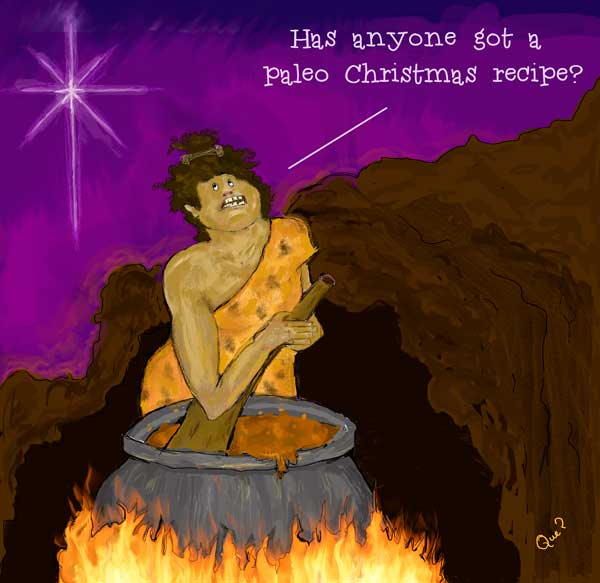
The Paleolithic diet, often abbreviated to paleo diet, is based mainly on foods presumed to have been available to humans in Paleolithic times. It’s also sometimes called the caveman diet or stone-age diet. People interpret this in a wide variety of ways. Some people pedantically refuse to use modern technology, eg microwave cooking, on the basis that cavemen didn’t have microwaves. However, such purists are rare.
Most people following the paleo diet eat vegetables, fruits, nuts, roots and meat, ie the food sourced by hunter-gatherers. Later foods, ie those produced by more settled agriculture, are generally avoided. These include dairy products, grains, sugar, legumes, processed oils, salt, alcohol and coffee.
It’s a controversial diet in as much as today we can only take an educated guess at what cavemen ate but can’t say with any certainty. Additionally, claims to the health benefits of eating like a caveman are disputed too. After all, these people had a much shorter life expectancy than we do today. Also, the digestive abilities of humans today are likely to be different from those of Paleolithic humans, which undermines the diet’s core premise.
Some argue that although little is known about the diet of Paleolithic humans, it is very likely that they consumed wild grains and legumes. During the 2.6 million-year-long Paleolithic era, the highly variable climate and worldwide spread of human population meant that humans were, by necessity, nutritionally adaptable.
The paleo diet, in its modern guise, was first developed in the mid-1970s and later popularised by Loren Cordain who published the best-selling book The Paleo Diet in 2002 – and trademarked the term.
Whilst there may be health benefits to cutting out or down on processed foods, salt and sugar, the British Heart Foundation cautions against rigidly following this or any other fad diet.
…cutting out dairy products and starchy foods, particularly wholegrains, means losing key sources of fibre, calcium and energy. This could affect your health in the long term. As for weight loss, some people do lose weight on the paleo diet. By cutting out large food groups – especially sugary and processed foods – you’re likely to consume fewer calories (energy), but most fad diets aren’t a long-term solution because they are hard to stick to.
Instead, make changes that can become everyday habits, while controlling your portion sizes. So, while this diet is a good reminder of foods we need to eat more of, we don’t need to travel back in time to be heart-healthy. The trick is to pick the best elements and enhance these with our modern advantages.
Nowadays, our meals can be healthy without being restrictive. We can use modern grills, microwaves and non-stick pans to cook food quickly and healthily. We also have access to a wide range of foods, including healthy options like frozen fruit and vegetables, giving year-round variety.
Source: British Heart Foundation: Is the paleo diet a good way to lose weight?
As of today, the paleo diet’s popularity continues. However, there is very little scientific evidence either way to prove or disprove that it genuinely does convey the health benefits which are claimed for it.

Leave a Reply